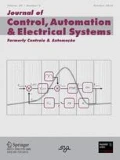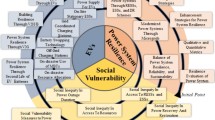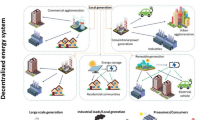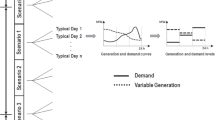Abstract
Transmission pricing is an important issue for transmission cost allocation. Because of the importance of this issue in the restructured power systems, several methods have been presented in recent years. Also, fairness of methods is a vital issue from the viewpoint of market designers and policy makers. This paper proposes a novel fair method to specify transmission tariffs, especially for wheeling contracts during peak and off-peak periods. In comparison to other recent studies, this approach has the advantage of considering congestion and security cost, when the wheeling contract leads to deviation from the optimum operation of wheeler network. Moreover, the security cost which is usually ignored in the transmission pricing will be allocated to market participants fairly. This method is applicable to implement in combined pool and bilateral electricity markets. In order to make a fair competition among market users, the congestion cost is allocated to all users in proportion to their contribution in network congestion. Compared with the current methods, the proposed approach take into consideration the congestion and security cost to strike the right balance between profit and cost related with fair market-based mechanisms. At the end, numerical examples on nine-bus test power system are utilized to demonstrate the effectiveness of the proposed approach.




Similar content being viewed by others
Abbreviations
- \(F_{l-k}\) :
-
Total transmission flow between buses l and k
- \(F^{0}_{l-k}\) :
-
Transmission flow between buses l and k obtained in previous iteration
- \(D_{l-k,r}\) :
-
D factor related to line connecting buses l and k caused by generation variation in reference bus
- \(G_{i}\) :
-
Total generation in bus i
- \(A_{l-k,i}\) :
-
Generation shift distribution factors (GSDF or A factors) related to line connecting buses l and k caused by generation changes in bus i
- \(C_{l-k,j}\) :
-
D factor related to line connecting buses l and k caused by generation variation in reference bus
- \(C_{l-k,r}\) :
-
GLDF related to the line between buses l and k caused by demand in bus r
- \(L_{j}\) :
-
Total demand in bus j
- TTC:
-
Total transmission cost
- TC\(_{t}\) :
-
The allocated cost to contract
- TP:
-
Wheeling tariff for the contract
- TC:
-
Transmission capacity cost
- CC:
-
Congestion cost allocated to contract
- \(L_{k}\) :
-
Length of line k (mile)
- \(C_{k}\) :
-
Cost per MW due to line unit length
- CC\(_{\mathrm{B}}\) :
-
Congestion cost allocated to Buyer
- CC\(_{\mathrm{S}}\) :
-
Congestion cost allocated to seller
- \(C_{N_{ij}}\) :
-
Normalized C factor related to buyer
- \(D_{N_{ij}}\) :
-
Normalized D factor related to seller
- TP\(_{\mathrm{B}}\) :
-
Wheeling tariff for buyer
- TP\(_{\mathrm{S}}\) :
-
Wheeling tariff for seller
- \(C^{k}\) :
-
Interruption cost for case k
- \(B_{I}\) :
-
The interruption cost in each buses
- SC:
-
System security cost
- SC\(_{AC}\) :
-
Security cost after applying wheeling contract to the network
- SC\(_{BC}\) :
-
Security cost before applying wheeling contract to the network
- SP:
-
Security tariff for wheeling contract
- \(T\) :
-
Set of contracts
- \(K\) :
-
Set of transmission lines
- \(P_{\mathrm{D}}\) :
-
Active power demand
- \(P_{\mathrm{G}}\) :
-
Active power generation
- \(P_ij\) :
-
Power transferred by transmission lines
- \(P\) :
-
The amount of transmitted power
- \(\pi ^{k}\) :
-
Probability that contingency k occur
- \(k\) :
-
Line number
- \(P_{\mathrm{L}}^{0}\) :
-
Load in buses before line k outage
- \(P_{\mathrm{L}}^{k}\) :
-
Load in buses after line k outage
- \(\Delta f_{\mathrm{l}}\) :
-
Change in megawatt power flow on line l
- \(\Delta P_{\mathrm{i}}\) :
-
Change in injection or demand at bus i
References
Abdullah, M.P., Hassan, M.Y., & Hussin F. (2008). Congestion cost allocation in a pool-based electricity market. International Conference on Power and Energy IEEE, pp. 1033–1037. doi:10.1109/PECON.2008.4762617.
Bashian, A., Sharifian, T., Javidi, M. H., & Hojat, M. (2011). Determination of tariff for wheeling contracts considering fairness congestion cost allocation. European Conference on Power and Energy Systems IASTED. doi:10.2316/P.2011.714-084.
Ghayeni, M., & Ghazi, R. (2011). Transmission network cost allocation with nodal pricing approach based on Ramsey pricing concept. IET Journals & Magazines 384–392. doi:10.1049/iet-gtd.2010.0169.
Gnanadass, R., & Padhy, N. P. (2005). A new approach for transmission embedded cost allocation in restructured power market. Journal of Energy & Environment, 4, 37–47.
Hamada, H., Tanaka, H., & Yokoyama, R. (2009). Wheeling charge based on identification of transaction paths in deregulated power markets. InternationalUniversities Power Engineering Conference UPEC, pp. 1–5.
Happ, H. (1994). Cost of wheeling methodologies. IEEE Transactions on Power, System, 9, 147–156. doi:10.1109/59.317547.
Hassan, M. (2000). MW-mile charging methodology for wheeling transaction. PhD thesis, University of Strathclyde.
Liu, B., Liu, Y., & Inabam, T. (2004). A new wheeling price calculation method considering transmission line congestion and loss costs. IEEE International Conference on Power System Technology, 2, 1201–1206. doi:10.1109/ICPST.2004.1460184.
Majidi, M., Ghazizadeh, M.S., Afsharnia, S. (2008). A novel approach to allocate transmission embedded cost based on mw-mile method under deregulated environment. IEEE Electrical Power & Energy Conference, pp. 1–6. doi:10.1109/EPC.2008.4763344.
Murali, M., Kumari, M.S., & Sydulu, M. (2011). A comparison of embedded cost based transmission pricing methods. IEEE International Conference on Energy, Automation, and Signal (ICEAS), 1–6. doi:10.1109/ICEAS.2011.6147073.
Olmos, L., & Arriaga, I. J. P. (2009). A comprehensive approach for computation and implementation of efficient electricity transmission network charges’. Energy Policy, 37(12), 5285–5295.
Panyakaew, P., & Damrongkulkamjorn, P. (2008). Optimal loss allocation of multiple wheeling transactions in a deregulated power system. International Conference on Electrical and Computer Engineering ICECE, pp. 343–348. doi:10.1109/ICECE.2008.4769229.
Shahidehpour, M., Yamin, H., & Li, Z. (2000). Market operation in electric power systems: Forecasting, scheduling, and risk management (1st ed.). New York: Wiley-IEEE Press.
Su, C., & Liaw, J. (2001). Power wheeling pricing using power tracing and MVA-KM method, Vo. 1. IEEE Power Tech Proceedings, Porto. doi:10.1109/PTC.2001.964570.
Wang, J., & Li, F. (2004). Optimal economic environmental dispatch considering wheeling charge. IEEE International Universities Power Engineering Conference, 1, 398–401.
Yousefi, G. R., & Seifi, H. (2004). Wheeling charges with consideration of consumer load modeling. Power Systems Conference and Exposition IEEE, 1, 168–173. doi:10.1109/PSCE.2004.1397521.
Author information
Authors and Affiliations
Corresponding author
Rights and permissions
About this article
Cite this article
Bashian, A., Hojat, M., Javidi, M.H. et al. Security-Based Tariff for Wheeling Contracts Considering Fair Congestion Cost Allocation. J Control Autom Electr Syst 25, 368–380 (2014). https://doi.org/10.1007/s40313-014-0106-x
Received:
Revised:
Accepted:
Published:
Issue Date:
DOI: https://doi.org/10.1007/s40313-014-0106-x




